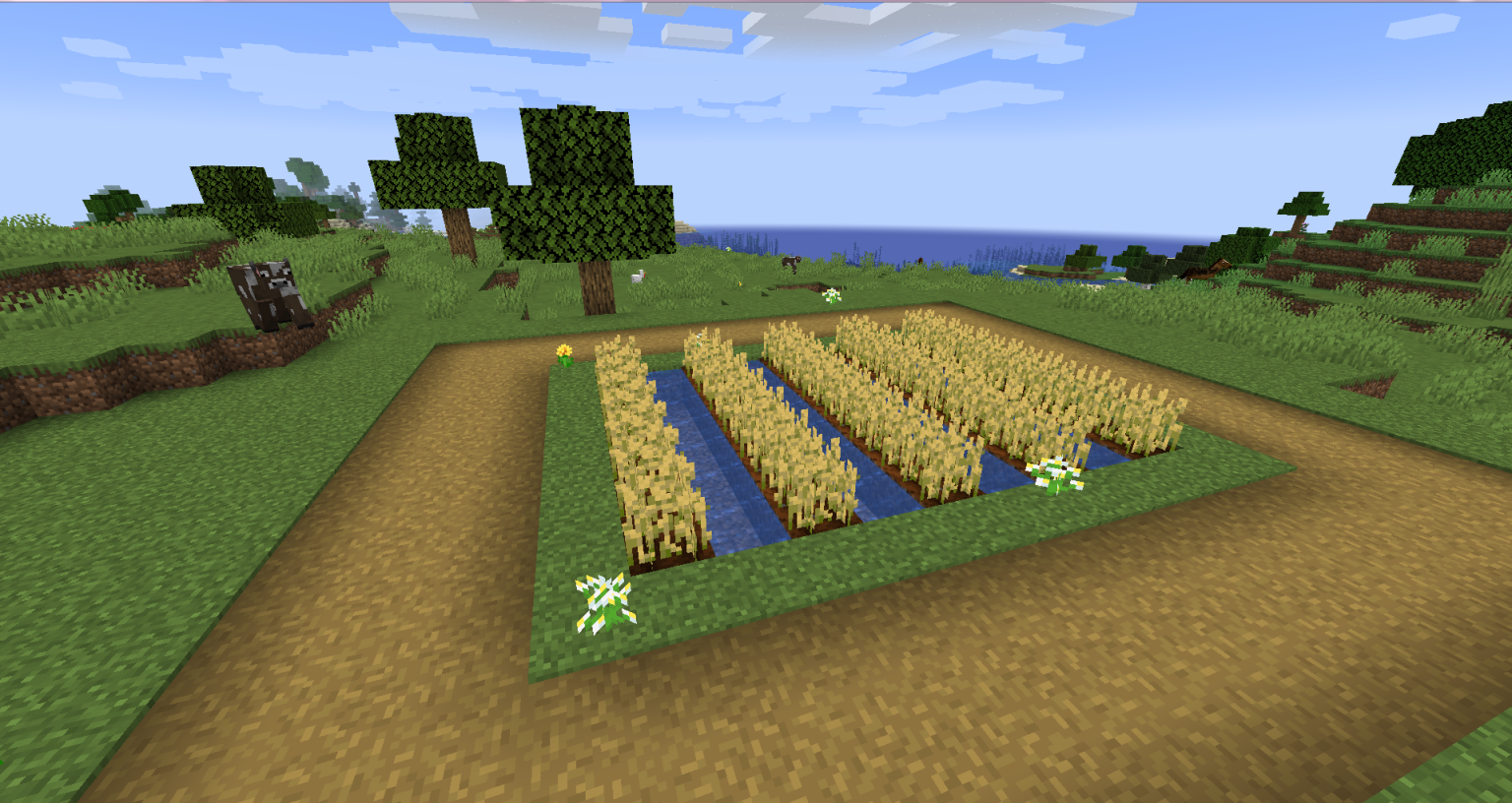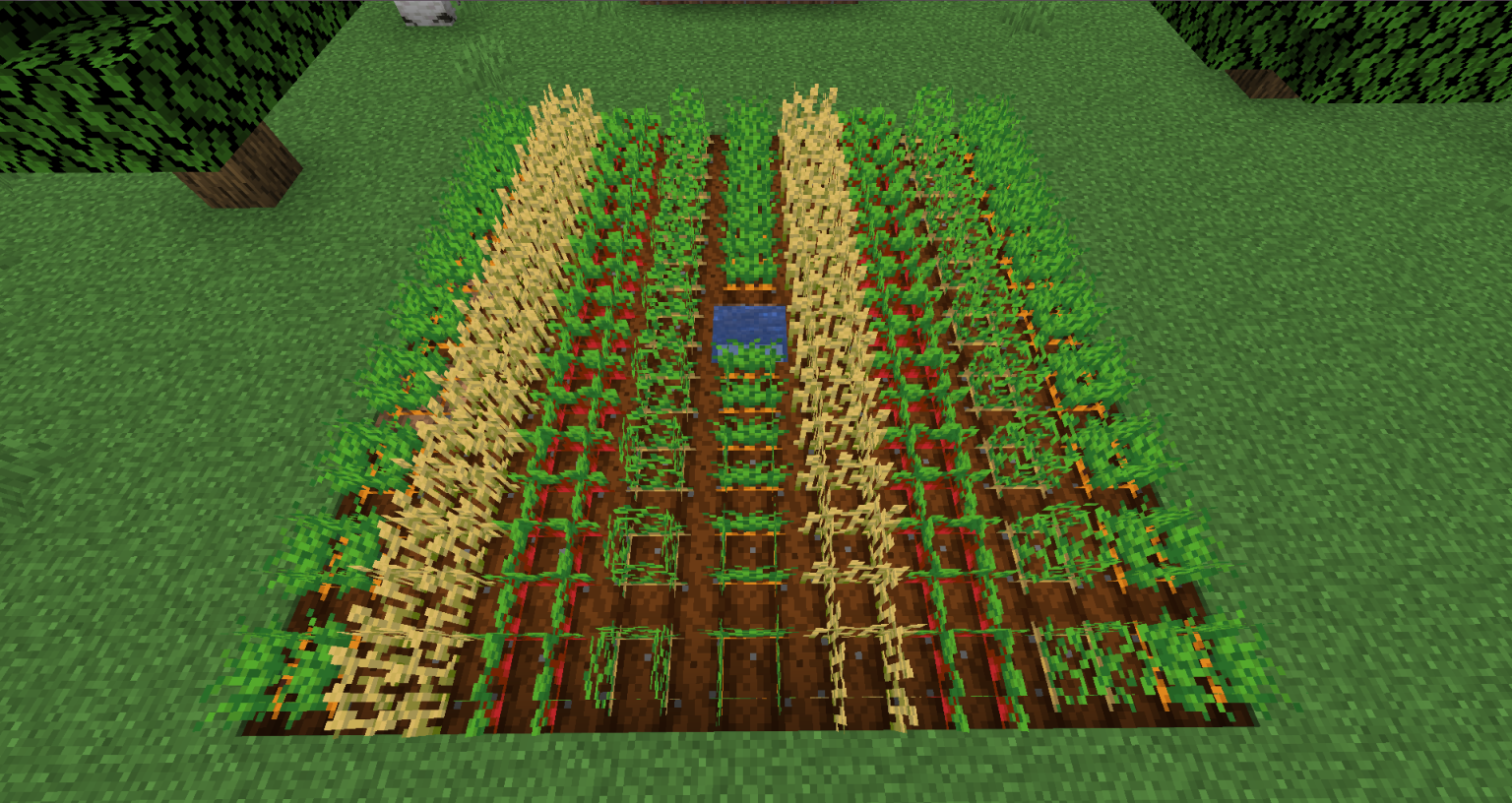Guide to Farming in Minecraft

Farming in Minecraft is an essential activity that helps players to gather resources for survival and crafting. From creating sustainable food sources to collecting materials for certain blocks and items, farming systems in Minecraft are both diverse and integral to gameplay. This guide will provide a comprehensive overview of farming mechanics, including crop farming, animal husbandry, tree farming, and more advanced systems such as automatic farms.
1. Basics of Farming
Farming in Minecraft begins with understanding the fundamental mechanics of the game. For any form of crop farming, the essential elements are light and water.
Light can come from either the sun or from artificial sources like torches. Crops need a light level of at least 9 to grow. For successful growth, ensure that your farmland is well lit.
Water is also crucial to farming. Hydrated farmland is identified by its darker color and crops planted on it grow considerably faster. To hydrate farmland, water needs to be within four blocks of the tilled soil.
2. Crop Farming
The main crops in Minecraft include wheat, carrots, potatoes, beetroot, and various types of seeds that yield pumpkins, melons, and more. Farming these crops follows a similar process:
- Use a hoe on dirt or grass blocks to create farmland.
- Plant your seeds or crops on the tilled ground.
- Ensure the farmland is hydrated and well-lit for faster growth.
As the crops grow through several stages, they eventually reach a "mature" stage where they can be harvested for produce and often yield additional seeds for replanting.
3. Animal Husbandry
Raising animals is another important aspect of farming. Animals not only provide a sustainable food source but also drop useful items.
To begin with animal husbandry, you'll need to lure two of the same type of animal into an enclosed space using their preferred food item. Once contained, you can feed the animals their respective food items to breed them.
Different animals provide different resources. For example, cows drop leather and can be milked with a bucket, sheep drop wool when sheared, and chickens lay eggs periodically.
4. Tree Farming
Trees are a significant resource in Minecraft, providing wood for building and crafting, apples for food, and saplings for replanting. Tree farming requires a bit more space compared to other farming types, but the process is straightforward.
Simply plant a sapling on a dirt or grass block and give it time to grow. The sapling will eventually grow into a tree, which can then be chopped down for wood. Remember to always replant with the saplings dropped from the leaves.
5. Advanced Farming Systems
As you progress in Minecraft, you can create more complex and efficient farming systems. Automatic farms, for example, use mechanisms involving redstone and other game mechanics to automate the process of resource gathering.
Automatic farms can be built for various types of resources - from crops and trees to mobs and their drops. Designing these systems can be intricate and complex, often involving extensive knowledge of game mechanics and creativity.
6. Environmental Considerations
Different biomes in Minecraft can affect the farming process. Some crops grow faster in specific biomes, and certain animals may only spawn in specific biomes. It's beneficial to familiarize yourself with these biome-specific traits to optimize your farming efforts.
In conclusion, farming in Minecraft is a valuable skill that sustains survival and fuels creativity. Whether you're a casual player or a dedicated farmer aiming for maximum efficiency, understanding and utilizing the farming mechanics of Minecraft will greatly enhance your gameplay experience. Happy farming!
You can rent Minecraft server hosting from GTXGaming.




